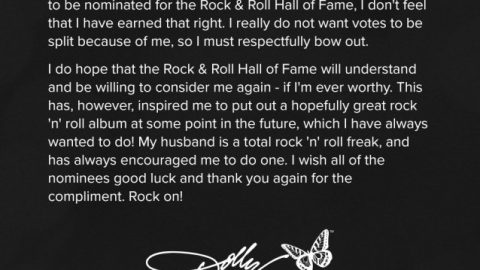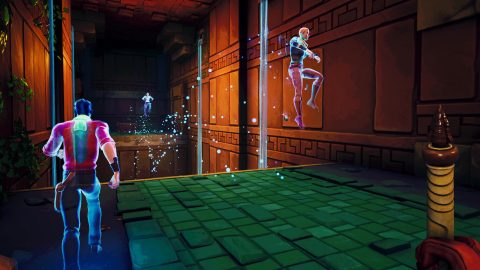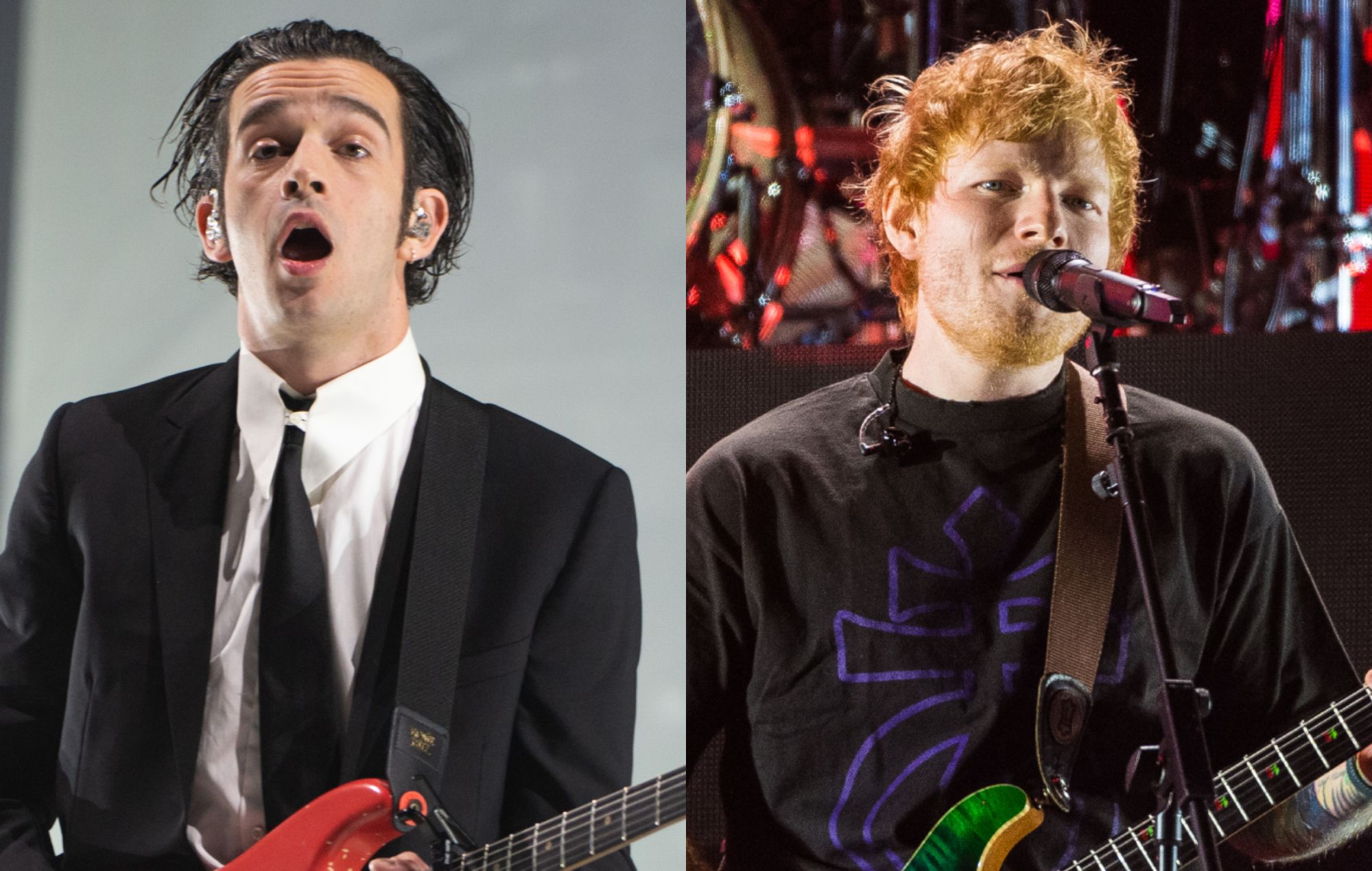
It’s hard to imagine now that there was ever a time when people might mock David Bowie, but mock they did. Since he sadly left us in 2016, he’s gained somewhat of a saintly reputation – but people have not always been so kind.
A new box set, ‘Brilliant Adventure’, celebrates all of Bowie’s solo albums from 1992 up until 1999’s ‘Hours’, as well as throwing in the unreleased 2001 record ‘Toy’ for good measure. It’s a period ripe for revision, given as so many of his moves back then were met with raised eyebrows and derision. This was when Bowie found pre-millennial relevance, but few recognised it at the time. Given the work that came in the years before, it’s hardly surprising.
He always did tap into the zeitgeist, but sadly for Bowie that meant becoming a little consumed by the money-hungry spirit of the ‘80s. After 1980’s spiky proto-grunge art-rock masterpiece ‘Scary Monsters (And Super Creeps)’ and the mammoth success of 1983’s pop-tastic delight ‘Let’s Dance’, he seemed less concerned with innovation and more with chasing hits and mass approval. This is what birthed the bloated and commercial, big-haired, shoulder-padded ‘80s silliness of ‘Tonight’ and ‘Never Let Me Down’, backed by the concept-heavy stadium Broadway pomp of The Glass Spider Tour. Bowie himself even dismissed this era as his “Phil Collins years”.
This only set his hard rock supergroup side-project Tin Machine up for a fall, but their self-titled 1989 debut and 1991 follow-up ‘Tin Machine II’ – a hangover from Bowie’s ‘80s period’ – are largely viewed as Bowie’s greatest missteps. Either way, it helped him to stretch his legs ahead of the reinvigorating period that was to follow: a decade of inspiration and left-turns.
In 1990 he told the world he was retiring many of his classic repertoire from his live set by playing his hits for the final time of the ‘Sound+Vision’ world tour. Then 10 years later, so great was the hunger for Bowie that he brought them back for his era-defining headline set at Glastonbury 2000. That night saw Bowie’s grace shine through so he could reclaim his legend and become the stately legend we remember it as today. But he had to go through so much to reach that point.
Bowie entered the ‘90s viewed as a naff dad-rock has-been, and left it as a Glastonbury-bound icon. These are the defining moments that made that possible.
The return to form
When: 1992
What happened? David Bowie, having disbanded Tin Machine and married supermodel Iman, returned rejuvenated. Reuniting with pianist Mike Garson and guitarist Mick Ronson (who he hadn’t worked with since his ‘70s peak) and his ‘Let’s Dance’ cohort Nile Rodgers, Bowie created a masterful, soulful and charming dose of forward-thinking art-rock that tackled his own demons and the racial tensions of the time.
Key moment: The lead single ‘Jump They Say’, somehow simultaneously a subtle prog-house banger while also reflecting on the death of his half-brother Terry, who took his own life in 1985 after a storied battle with mental illness and schizophrenia.
The Twin Peaks cameo
When: 1992
What happened? Is there a better way to scare away Phil Collins fans than by yelling your way through a nightmarish David Lynch scene? Nope, and Bowie’s cameo FBI Agent Phillip Jeffries in Twin Peaks: Fire Walk With Me remains of the most entertaining moments from the entire Twin Peaks series and one of his finest on-screen moments, showcasing Bowie’s chameleon acting chops and knack for a delicious Southern drawl – all while putting him at the table of left-field art for the years to follow. The Labyrinth, it ain’t. Not a codpiece in sight.
Key moment: “AW HELL GOD BABY DAMN NO!” So good.
The forgotten gem
When: 1993
What happened? Written as a soundtrack for a film adaptation of Hanif Kureishi’s novel of the same name, ‘The Buddha Of Suburbia’ was released to little fanfare in 1993. Yet those who heard it were treated to the glorious sound of Bowie at his most free and experimental, but also a record with rich song craftsmanship at his core. While referencing a great deal of his glam and synth-driven mid-to-late ‘70s work and drawing on influences from T. Rex and Roxy Music to Kraftwerk and Neu!, there’s a confidence and modern sheen to ‘The Buddha Of Suburbia’ that leaves it feeling constantly contemporary. In 2003, Bowie would declare this to be his favourite of all his albums, but remains largely a lost gem and overshadowed by the towering reputation of his other masterpieces. Give it some love.
Key moment: ‘Dead Against It’ – Bowie at his classy and glacial best. It still sounds like a bullet train to the future.
The outsider statement
When: 1995
What happened?: While everyone else was ‘avin it to Britpop and convinced that we were gonna live forever, Bowie loaded up on pre-millennial dread to deliver a terrifying art-rock concept record about a detective investigating the murder of a 14-year-old girl in a seedy underworld of “art crimes”. PARKLIFE! Told through the perspectives of all the ne’er do wells involved, this is Bowie flexing his ability to create characters and a whole world to get lost in. Having reunited with Brian Eno for the first time since his seminal late ‘70s Berlin trilogy, ‘Outside’ also makes for a dense soundscape of industrial metal, trip-hop and ambient electronica. Released to confusion and mixed reviews at the time, this now stands up as one of Bowie’s most challenging but rewarding statements.
Key moment: Bowie having a go at gothic metal on ‘The Heart’s Filthy Lesson’ and showing a new generation of shock-rockers how it’s done.
The tour with Nine Inch Nails
When: 1995
What happened? Thriving when he’s at his least comfortable, Bowie chose to match the challenging material of ‘Outside’ with the challenge of touring with Trent Reznor and the industrial metal trailblazers Nine inch Nails in the US. Speaking to Humo magazine, he explained that “it seemed logical to confront myself with the NIN audience”. With their star on the rise and Bowie’s seen as on the decline, early dates were reportedly almost entirely made up of NIN fans, forcing the icon to up his game and reinvent himself again to win them over. It worked, and we can only dream of seeing a line-up like that again.
Key moment: Rather than have a break in between sets, the two acts segued their performances together to make for one long continuous show. Their explosive on-stage collaboration to deliver tracks like ‘Scary Monsters’ is something else.
The Warhol tribute
When: 1996
What happened? Bowie may have paid tribute to Andy Warhol by writing a song in his honour on 1971’s ‘Hunky Dory’, but that didn’t do him any favours when the two met later that year for an awkward and embarrassing experience, as the pair didn’t hit it off and had little to say one another. Still, it left enough of an impression on Bowie for him to later pull off one heck of a performance portraying the pop-art genius in the 1996 biopic Basquiat, the story of the ill-fated neo-expressionist Jean-Michel Basquiat. It’s by far the best on-screen depiction of Warhol, and Bowie even manages to make him almost likeable.
Key moment: “Not piss paint, Jean – oxidation art!”
The 50th birthday party
When: 1997
What happened? What did you do for your last birthday? Did you spotlight how your influence on alternative music runs throughout the ages by playing a headline show at New York’s Madison Square Garden with Foo Fighters, Lou Reed, Smashing Pumpkins’ Billy Corgan, Sonic Youth, Pixies’ Frank Black and The Cure’s Robert Smith? No? How was Nando’s? Did you have the wrap?
Key moment: ‘All The Young Dudes’ with Billy Corgan. Chills.
The jungle boogie
When: 1997
What happened? Carrying the rockier edge of ‘Outside’ but buoyed by the influence of jungle, techno, drum and bass and contemporary dons such as The Prodigy and Underworld, many viewed the ‘Earthling’ album as something of a midlife crisis with the beats shoehorned in to tap into a prevailing mood. The truth is that if you revisit it now, you’ll hear a boisterous, lively and invigorated Bowie.
Key moment: ‘I’m Afraid Of Americans’, which would also be remixed by Nine Inch Nails with his pal Trent Reznor starring in the superb music video.
The Placebo collab
When: 1999
What happened? Having been a friend and mentor for a few years, Bowie jumped on the single version of the aching title track from Placebo’s immaculate second album ‘Without You I’m Nothing’, as well as appearing with them at the BRIT Awards for a legendary cover of T-Rex’s ‘20th Century Boy’ – passing the baton while also introducing Bowie as the godfather of glam and gender-bending rock grace to a whole new generation.
Key moment: This gorgeous performance of ‘Without You I’m Nothing’ in New York
The future interview
When: 1999
What happened?: It’s hard to imagine it now, but people so easily forget that in 1999 the internet was in relative infancy in comparison to what we know it as today. Google had only just launched. MySpace, Facebook, Twitter, Youtube – and the idea of a ‘social network’ being able to steer an election or shape the very concept of ‘truth’ – all seemed unfathomable. It was the year that Napster launched to later forever change the way we consume music, but this was three years after Bowie had become the first major artist to release a single via download only.
Hell, in 1998 he even launched BowieNet – his own internet service provider with a vast online archive, a collection of interactive material and a social network (via a live chat section that Bowie himself often frequented). These were ideas that many major corporations wouldn’t get their head around for another decade or more. His ideas and ambitions were captured in this now legendary Newsnight interview, in which Bowie tells a highly cynical Jeremy Paxman that the internet was much more than a means of relaying basic information, but a revolution in the waiting – soon to transform the way we live our lives and make art, destroying the boundaries between creator and audience.
Key moment: “I don’t think we’ve even seen the tip of the iceberg,” Bowie tells Paxman. “The potential of what the internet is going to do to society, both good and bad, is unimaginable. I think we’re actually on the cusp of something exhilarating and terrifying”. As Bowie’s promo posters for the seminal 1977 album ‘Heroes’ once told us: “Tomorrow belongs to those who can hear it coming”.
– ‘Brilliant Adventure’ is out now on Parlophone/ISO Records
The post Brilliant Adventure: David Bowie’s 10 defining moments from the ‘90s appeared first on NME.






